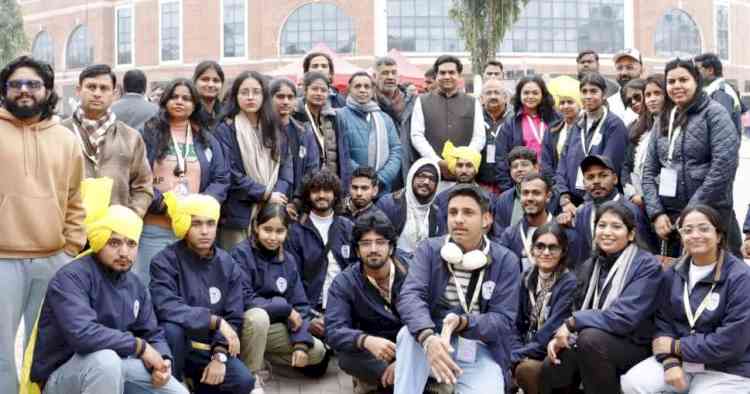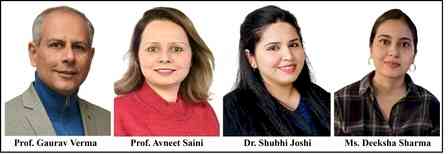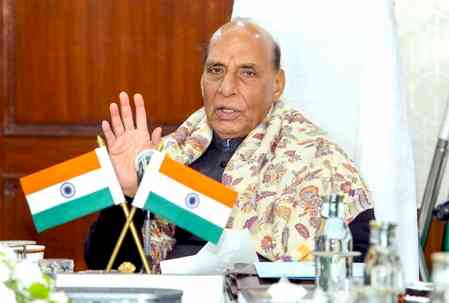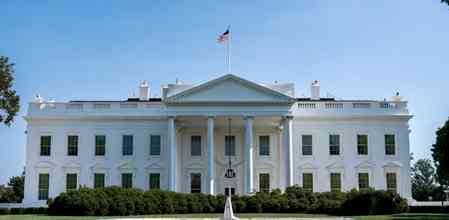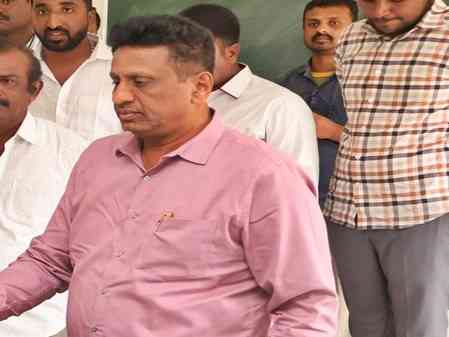Professor J C Anand Memorial Lecture by PU
Nine Goalposts the NEP Discussed
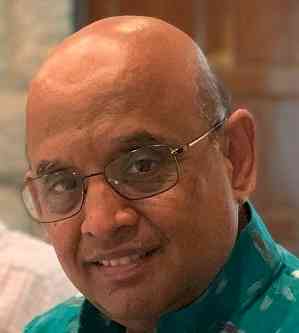
Chandigarh: Professor J C Anand Memorial Lecture was organised in Panjab University on ‘New Education Policy’ today which is held annually in memory of the former University Faculty by Professor Sandeep Shastri, the Vice-Chancellor of Jagran Lakeview University, Bhopal who earlier served as Deputy Vice-Chancellor of Jain University, Bangalore.
Professor Shastri in his lecture referred to the nine goalposts the NEP (Navsutra) aim at to achieve to transform India’s education system globally competitive: inclusiveness, equitability, quality, lifelong learning, flexibility, sensitivity, rootedness, synergy, interdisciplinarity. Presenting an analytical view on the policy document, Professor Shastri referred to the classification of the higher educational institutions into three categories: research intensive, teaching intensive and autonomous colleges. He also referred to the policy emphasis on the need to work on reforms in the areas like fiscal prudence, fixing accountability, good governance and bringing transparency in the university system.
Further, he hailed the emphasis on multi-disciplinarity by allowing flexibility in the existing curriculum so that students may opt for subjects from different disciplines. Introduction of courses in teaching/ pedagogy/ writing related to the chosen Ph D subject during the doctoral training programme was also welcome as it would lead to skill enhancement. The setting up of multidisciplinary education and research universities (MERU) has been envisaged in the policy document for the purpose. The setting up of the National Research Foundation is also a creative step in the right direction and so is the introduction of an optional four -year graduation course with the last year focused more on research. The whole idea has been to create globally acclaimed university system and make India Viswa guru again. Integration of professional and vocational knowledge like in the ancient past needs to be revived. A vibrant academic culture would be created this way.
Shastri emphasised over better centre-state coordination over the implementation part as education is the concurrent subject. They have after all have an important role to play in implementing the policy in their respective domains whereas they were not properly consulted in the process of making it by the centre. The other important stakeholders are the university teachers across India who were also not much involved in the policy making what turned out more like a top-down bureaucratic exercise. He also referred to the proposal of creating a national higher education regulatory council to govern the higher education institutions in place of the existing bodies like UGC. The idea has been to end the fragmentation of higher education system by transforming higher education institutions into multi-disciplinary universities giving importance to all the disciplines including the sciences, social sciences and languages along with the applied disciplines.
Shastri cautioned that it should bring about qualitative change in running the government institutions and should not be only a window dressing exercise with the bureaucratic control remaining as firm as ever thus undermining the much needed autonomy of the educational institutions, a point Professor V.R. Sinha, Dean University Instructions, also made in his presidential remarks. Shastri was also sceptical about the abolition of M. Phil. as he argued that Master degree courses at present do not have courses on research methodology and as such there is a need to revamp the existing curriculum. Also, it is important that social sciences and languages are not neglected in this regard.
Speaking about the difficulty in achieving uniformity across the states in terms of implementation Shastri emphasised on greater consultations between the centre and the states and also with the teachers. Apprehension is that many states having different social, cultural and economic realities may not be willing to go along with the centre as had happened with the NEP, 1986, revised in 1992 (refer to the non-implementation of three language formula in Tamil Nadu as envisaged in 1968 NEP document). This would be a tragedy as the NEP is such a progressive document with bold ideas and promises to bring about quality education. So the proposed subject-wise implementation committee of experts in cooperation with other ministries at the centre and state levels should have much better participation of the teachers and not simply dominated by the bureaucracy for making the policy actionable. The increasing gap between the state and central universities in terms of funding, infrastructural facilities, availability of teaching faculty, service conditions has created an inbuilt hierarchy in the university system, a point raised by Professor Ashutosh Kumar and agreed by Professor Shastri. This also brings into the question of employability levels of different institutions despite all having similar courses and being regulated under the similar policy framework. Professor Sinha also drew attention to the funding issue being faced by universities due to the asymmetrical nature of fee structure for different courses being offered by the universities, more so when compared with the mushrooming private universities which creates another kind of hierarchy. A fair and transparent system of determining funding support for state and central universities is something which the NEP emphasis upon.


 cityairnews
cityairnews 
